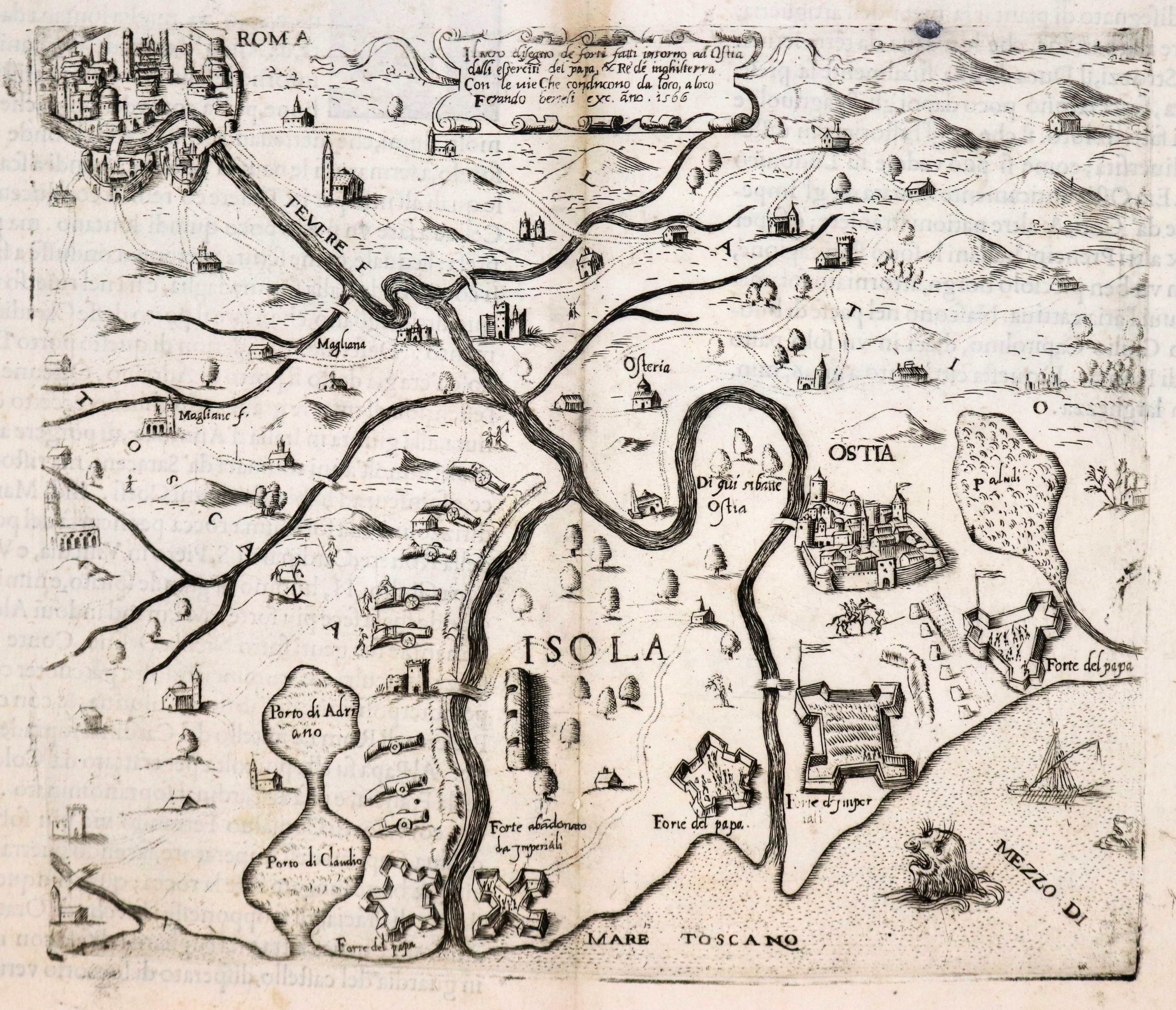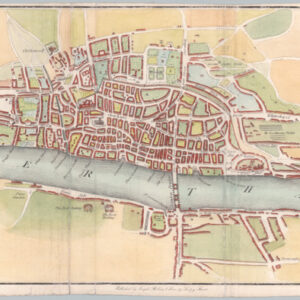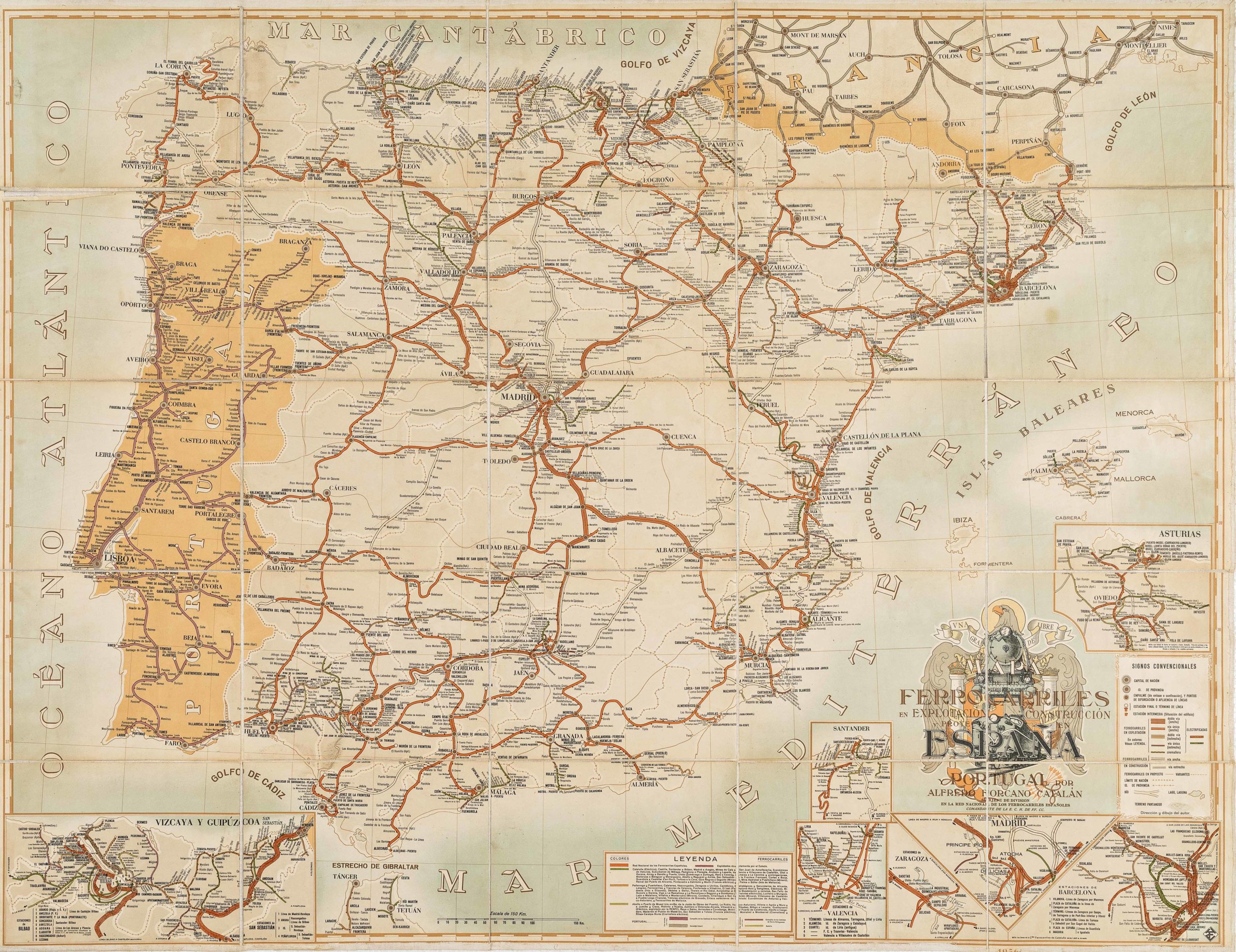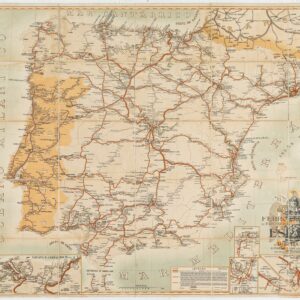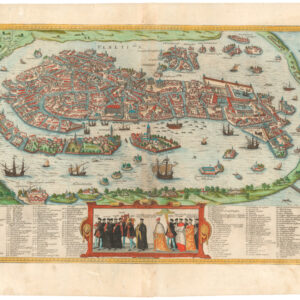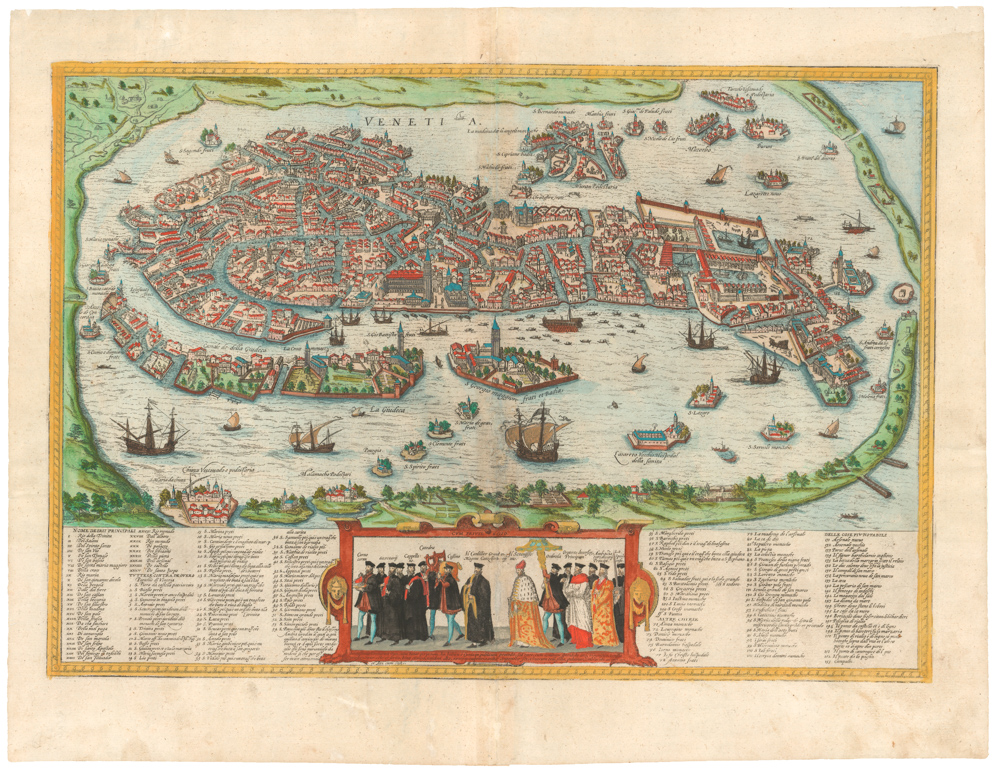In-progress construction of the Trans-Siberian Railway: a scarce wall map depicting the transportation network of the Russian Empire at the end of the 19th century.
[Map of Steamship Routes and the Railways and Post Roads of the Russian Empire]
$1,850
1 in stock
Description
Карта Пароходныхъ Сооьщеній Желѣзныхъ и Почтовыхъ Россійской Импегіи.
This fascinating and well-designed map brilliantly showcases the state of the transportation network in the Russian Empire during a critical time of ambitious and transformative growth. As noted in the legend in the upper left, the red lines denote railways (while dotted red lines delineate routes under construction); blue lines in the seas denote steamship routes; black lines depict post roads; while the routes of several great canals are delineated in European Russia. Mileages are given between key points along the roads and the railways lines. The map was designed and published by the Cartographic Establishment of Alexey Ilyin, the empire’s leading commercial mapmaker, predicated upon the most authoritative information directly supplied by the Russian government, with which the firm maintained a privileged relationship.
The main body of the map focusses upon European Russia, which had a relatively well-developed transport network, thoroughly criss-crossed in many regions by roads, railways and canals. However, the most interesting aspects of the map are perhaps contained in its insets, three of which detail the progress of the Trans-Siberian Railway, then under construction, which would become the greatest fixed transport link anywhere in the world. The large inset running along the top of the map details the completed stretch of the Trans-Siberian Railway, from Kurgan to Achinsk; while the inset in the composition’s lower-left corner details the partially completed eastwards continuation, past Krasnoyarsk towards Irkutsk; while the inset above details the intended Far Eastern route, from Irkutsk to Vladivostok.
On an entirely different track, the three small insets, in the lower-right of the composition, detail the railway networks that emanate out of the key nodes of St. Petersburg and Moscow, as well as the railway lines in Russian-controlled Poland.
Historical Context: Russia’s Trans-Eurasian Ambitions
The 1890s marked a transformative period in the development and modernization of Russia. The empire was experiencing an unprecedented period of (albeit highly iniquitous) economic growth, which funded grand-scale infrastructure projects, and by this time, European Russia was criss-crossed with railway lines and macadamized post roads. Since 1870, Moscow and St. Petersburg had been linked to the Black Sea by rail, and as shown on the map, a line to Archangel, on the Arctic Ocean, had just been completed. Additionally, privately run steamship lines were given concessions to run numerous routes in the Baltic, White, Black and Caspian Seas. These developments, in turn, spurred industrialization and urban growth throughout the western part of the Empire.
Importantly, Russia had earlier in the century extended its presence into Central Asia, annexing large territories (including much of Turkmenistan, Kazakhstan and Uzbekistan) and gaining political control over northern Persia. In what had, since the late 1830s, been known as the ‘Great Game’, this expansion was part of an ambitious Russian master plan to keep pushing further southwards into Asia, so challenging British control of India and the Persian Gulf. The Russian railways, shown on the map, connecting the Caspian Sea (and the great oil wells around Baku) to the Black Sea, and the lines extending east and south into Asia from the Caspian were all key elements of this design.
In the Far East, Russia was extending its control and influence from its base city, Vladivostok (founded in 1860), seeking to rival Japan for dominance over the northern Far East. Russia heavily interfered in Korean and Chinese internal affairs and, in 1895, following the Treaty of Shimonoseki, Russia gained control of the strategic Chinese Port of Lüshun (Port Arthur), in Manchuria.
The key to Russia’s Asiatic ambitions was the construction of a fixed link across Siberia – from Moscow to Vladivostok. With envisioned spur lines extending down into Central and Eastern Asia, Russia could be assured of moving troops and goods faster across the continent than any of its rivals. This promised to completely turn the tables on Britain and Japan.
However, the Trans-Siberian Railway was by far and away the greatest infrastructure project ever attempted, and would require careful planning, immense resources and herculean efforts. To initiate the project and to inspire patriotic fervour, in 1890, the Tsarevich (from 1894 Tsar Nicholas II) embarked on a grand tour, sailing through the Suez Canal on an embassy to Japan, before arriving at Vladivostok. From there, he began a long overland journey through Siberia back towards Moscow. Along the way, he supervised the early stages of construction of the Trans-Siberian Railway, which from 1891, was being built at various points simultaneously.
As shown on the inset map, progress on the Trans-Siberian Railway was quite impressive, as by 1898, the line had been extended eastwards from Moscow as far as the Biryusa River, east of Kansk (a quarter of the way between Krasnoyarsk and Irkutsk); while in the Far East the line had been completed from Vladivostok up to Khabarovsk. However, the project would subsequently be slowed by Russia’s shocking defeat in the Russo-Japanese War (1904-5) and the advent of WWI, such that the main Trans-Asiatic line would not be completed until 1916. Nevertheless, once completed, the Trans-Siberian Railway extended 5,753 miles, making it by far the longest railway in the world, a distinction it still holds to this day.
While Russia’s design to dominate the Far East ultimately proved unsuccessful (uprooted by the tumult of World War I and the fall of the Tsarist regime in 1917), the map shows that by 1898, Russia had completely transformed its place in the World from a, albeit large, peripheral player, to becoming a great international power which would play a leading role in 20th century geopolitics.
Cartographer(s):
The Cartographic Establishment of A. Ilyin was founded in 1859 by General Staff officers Alexey Ilyin (1832-1889) and Vladimir Poltoratsky (1830-1886). The firm was originally known as the Chromolithography of Poltoratsky, Ilyin and Co., but after Poltoratsky’s departure in 1864, its name was changed to solely reflect Ilyin’s stewardship.
Ilyin had served as cartographer for the Military Topographic Depot of the General Staff and was eventually promoted to the rank of Lieutenant-General. He thus had privileged access to government map archives, granting him a great competitive edge over his rivals.
After the death of Alexey Afinogenovich, one of his sons, Alexey Alexeevich Ilyin (1857-1942) assumed control over the firm. By 1882, the enterprise reached its zenith, producing up to 6 million impressions, accounting for around 90% of all civilian cartographic products published in Russia. The company prospered until it was nationalized following the Communist Revolution of 1917.
Condition Description
Dissected into 16 sections and mounted upon original linen. Some mild toning.
References
Cf. (re: 1899 ed.:) Russian State Library (Moscow): KGR Ко 5/VIII-28.
The Ilyin editions were widely considered to be the most detailed and accurate popular records of the Russian transportation system during a key era and are therefore seminal primary documents for Russian history and the history of geopolitics throughout Eurasia. The maps were issued for use by government agencies, transport contractors and large commercial concerns. Examples of the map would have been mounted upon office walls and exposed to heavy use, and thus such large wall maps have a relatively low survival rate and are today quite scarce.

